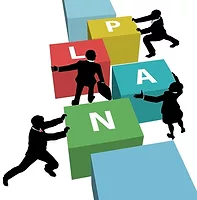Sponsored Content
All Set for FSMA? Don’t Forget the Reanalysis!

Since September 2016, domestic and foreign human food facilities have been required to have food safety plans under 21 C.F.R. Part 117, the Hazard Analysis and Risk-Based Preventive Controls for Human Food rule.
“Been there/done that” you say. You appointed a Preventive Controls-Qualified Individual (PCQI), paid for training for the PCQI, had a food safety plan developed by the PCQI, had preventive controls implemented as required with appropriate validation and verification by the PCQI, and have ongoing reviews of monitoring and corrective actions by the PCQI within 7 working days and ongoing reviews of other records, such as calibration, by the PCQI within a reasonable period of time.
But “once in compliance, always in compliance” does not ring true. Three years down the road now, the food safety plan must be reanalyzed, with the reanalysis led by a PCQI. Even though the 3-year deadline for reanalysis has not yet been reached by human food facilities with fewer than 500 employees, we need to remember that the reanalysis must also be performed for cause. In 21 C.F.R. 117.170(b) is stated “You must conduct a reanalysis of the food safety plan as a whole, or the applicable portion of the food safety plan: (1) whenever a significant change in the activities conducted at your facility creates a reasonable potential for a new hazard or creates a significant increase in a previously identified hazard; (2) whenever you become aware of new information about potential hazards associated with the food; (3) whenever appropriate after an unanticipated food safety problem in accordance with 117.150(b); and (4) whenever you find that a preventive control, combination of preventive controls, or the food safety plan as a whole is ineffective.”
What changes in activities are possibly significant for your facility and should trigger your PCQI to conduct a reanalysis? There is no exhaustive list of triggers for reanalysis, but it’s convenient to view examples of triggers from the process, manpower, and raw materials, other supplies, and other broader impacts on facilities to see how many changes may potentially impact food safety at your facility. Changes impacting food safety may also be related to your supplier’s facility, including facilities of foreign suppliers under FSVP. The following are a few examples of changes and situations that may impact food safety and should bring about a reanalysis, possible revisions to the food safety plan, or a determination that no changes to the food safety plan are needed:
- New equipment or changes to existing equipment
- Process changes, such as related to throughput
- Additional raw materials, processing aids, cleaning supplies, etc.
- Different suppliers, which could bring about consideration of allergens present at a new supplier’s facility
- Changes in top management or ownership
- Staffing changes such as increases, decreases, or a reorganization
- New construction or renovation
- Natural disasters, such as flooding
- Customer complaints, recalls, or other evidence of failure of the food safety plan
- Any or all of the above changes at an existing supplier
Most human food facilities make many such changes on a routine basis and encounter others over time. Each change—additional information, other unanticipated problem, or an ineffective aspect of preventive controls or your plan—should trigger the PCQI to conduct a reanalysis. Based on the reanalysis, your PCQI should then revise the food safety plan or document that no revisions to the plan are needed. Reanalysis means calling together the food safety team to repeat the hazard analysis and all required aspects of the food safety plan. This reanalysis may bring about other actions as well: a process change may require revalidation of the preventive controls, also to be performed or overseen by a PCQI.
Moreover, the reanalysis must be completed before any change in activities, or within 90 days or a reasonable timeframe exceeding 90 calendar days if justified in writing by the PCQI.
The bottom line is that there are multiple demands on your PCQI. Multiple PCQIs may be needed to ensure sufficient manpower for all ongoing compliance requirements, including reanalysis.
Rachel Montgomery is an Food Safety Preventive Controls Alliance (FSPCA) Lead Instructor, with over 30 years’ experience as a food safety executive in large-scale manufacturing. She is the principal of Simple Compliance Solutions, LLC and a registered microbiologist (National Registry of Certified Microbiologists). Simple Compliance Solutions provides FSPCA PCQI and Foreign Supplier Verification Program training and consulting services for food manufacturers and importers. Visit FSMAComplianceTraining.com for more information.
Looking for quick answers on food safety topics?
Try Ask FSM, our new smart AI search tool.
Ask FSM →







